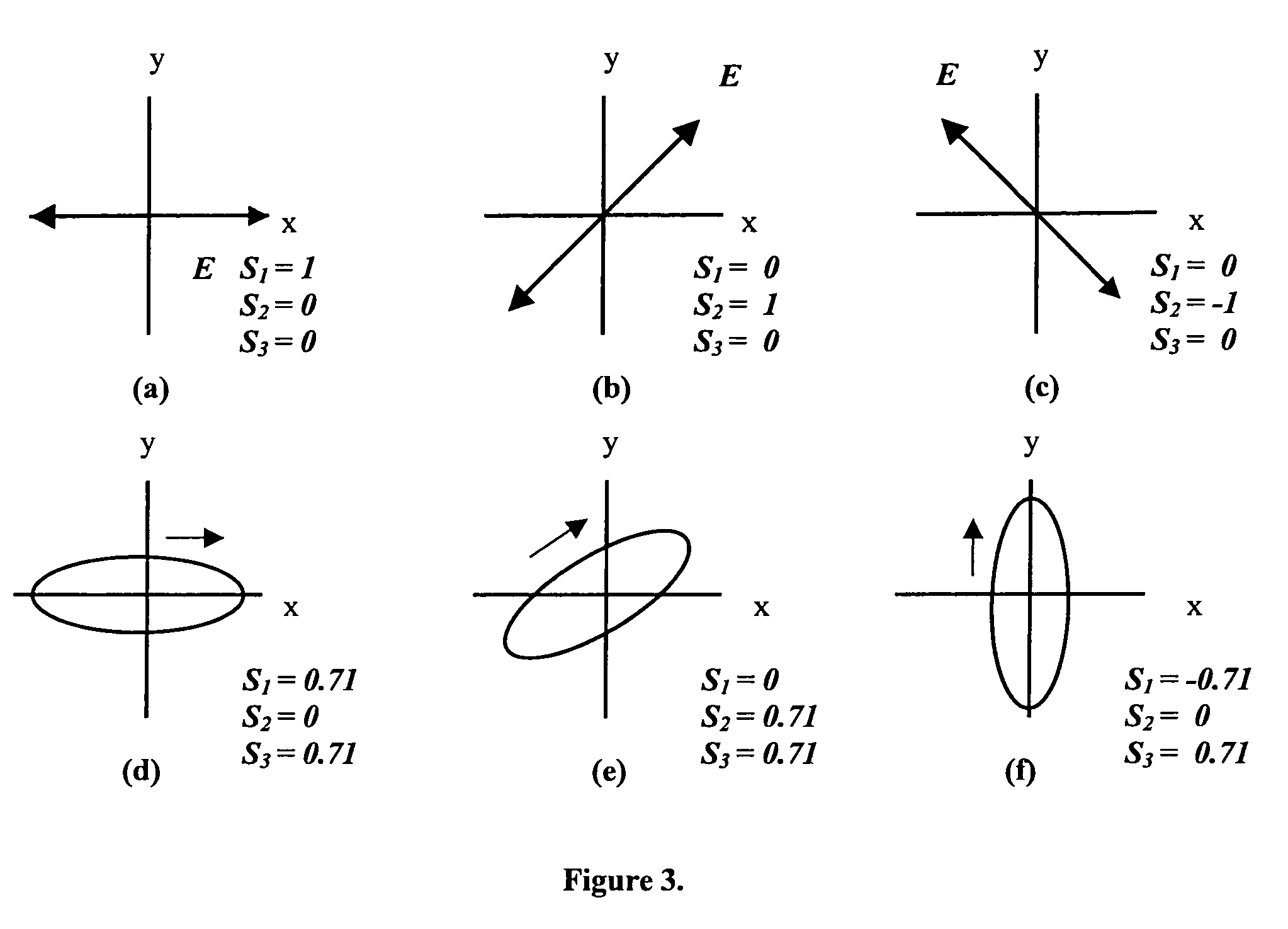Method for polarization-based intrusion monitoring in fiberoptic links
a technology of intrusion monitoring and fiberoptic links, applied in transmission monitoring, transmission monitoring/testing/fault-measurement systems, electrical equipment, etc., can solve the problem of random and unpredictable slow time-varying birefringence components
- Summary
- Abstract
- Description
- Claims
- Application Information
AI Technical Summary
Benefits of technology
Problems solved by technology
Method used
Image
Examples
Embodiment Construction
[0028] Presently preferred embodiments of the invention are shown in the above-identified figures and described in detail below. In describing the preferred embodiments, like or identical reference numerals are used to identify common or similar elements. The figures are not necessarily to scale and certain features and certain views of the figures may be shown exaggerated in scale or in schematic in the interest of clarity and conciseness.
I. Introduction
[0029] Referring now to the drawings and in particular to FIG. 7A, a fiber optic communication system 10 constructed in accordance with the present invention is shown. The fiber optic communication system 10 uses the polarization of the light signal to enhance the physical security of one or more fiber optic link 12 in optical network(s). In a preferred embodiment, a polarization-shift keying (POLSK) scheme is used to generate an expected pattern of changing states of polarization (SOPs). A deviation from the expected pattern at t...
PUM
 Login to View More
Login to View More Abstract
Description
Claims
Application Information
 Login to View More
Login to View More - R&D
- Intellectual Property
- Life Sciences
- Materials
- Tech Scout
- Unparalleled Data Quality
- Higher Quality Content
- 60% Fewer Hallucinations
Browse by: Latest US Patents, China's latest patents, Technical Efficacy Thesaurus, Application Domain, Technology Topic, Popular Technical Reports.
© 2025 PatSnap. All rights reserved.Legal|Privacy policy|Modern Slavery Act Transparency Statement|Sitemap|About US| Contact US: help@patsnap.com



